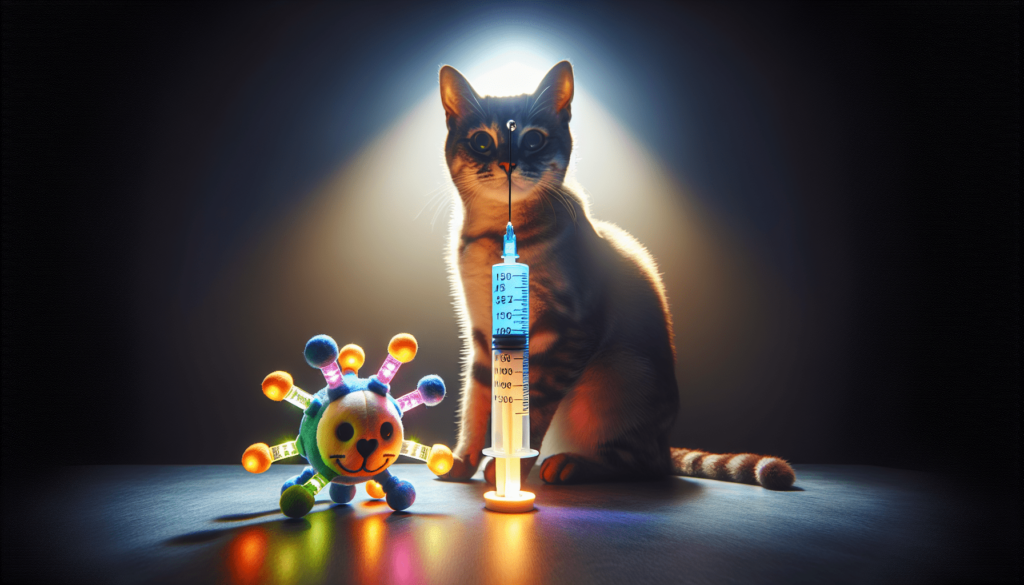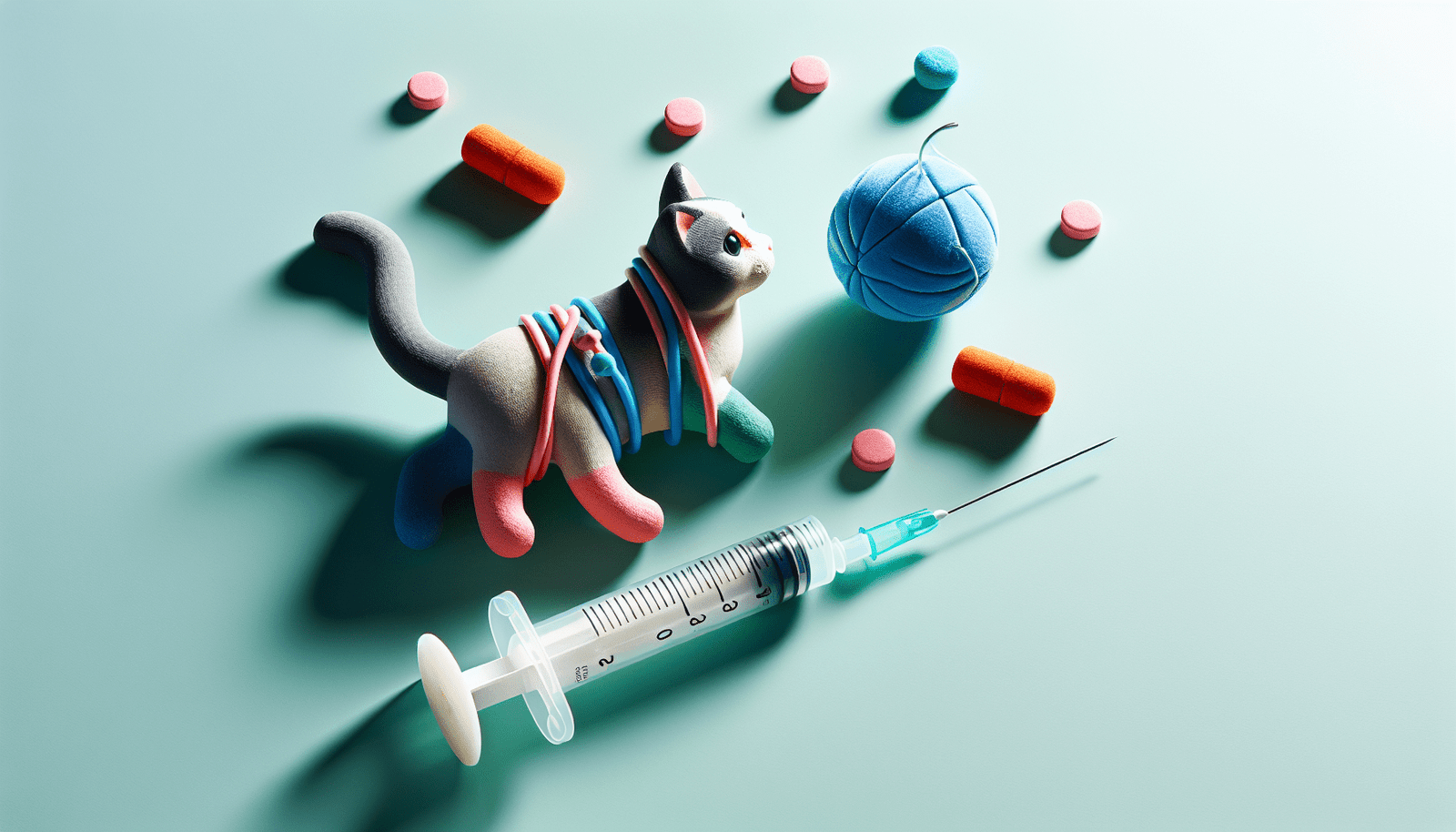If you’re a cat owner who has ever wondered about the safe dosage of prednisone for your feline friend, then this article is for you. Understanding how much prednisone can be given to your cat is crucial for their well-being and overall health. In this informative piece, we will explore the appropriate dosage of prednisone for cats, the potential side effects to watch out for, and when it is necessary to consult with a veterinarian. Keeping your furry companion’s health in mind, let’s dive into the world of prednisone dosage for cats.

Understanding Prednisone
Prednisone is a commonly prescribed medication in veterinary medicine. It is a synthetic corticosteroid that mimics the action of the hormone cortisol, which is naturally produced by the adrenal glands. Prednisone is primarily used for its anti-inflammatory and immunosuppressive properties.
What is Prednisone?
Prednisone is a medication that belongs to the class of drugs known as corticosteroids. It is prescribed to cats to help manage various medical conditions, including allergies, asthma, immune-mediated diseases, and certain types of cancers. Prednisone works by reducing inflammation in the body and suppressing the immune system’s response to different stimuli.
How does Prednisone work?
Prednisone works by binding to specific receptors in the cells and changing the activities of certain genes involved in the inflammatory response. It inhibits the production of substances that cause inflammation, such as prostaglandins and leukotrienes. By reducing inflammation, prednisone helps alleviate symptoms associated with various medical conditions and improve the overall well-being of the cat.
Why is it used in cats?
Prednisone is commonly used in cats because of its potent anti-inflammatory effects. Cats are susceptible to a variety of conditions that involve inflammation, such as allergies, skin disorders, and certain autoimmune diseases. By reducing inflammation, prednisone can alleviate discomfort and improve the quality of life for cats suffering from these conditions.

Common uses for Prednisone in veterinary medicine
In veterinary medicine, prednisone is widely used for various purposes. It is commonly prescribed to cats to manage allergies, inflammation-related skin conditions, and respiratory disorders such as asthma. Prednisone is also frequently used as part of the treatment protocol for immune-mediated diseases and certain types of cancers in cats.
Determining Dosage
General guidelines for Prednisone dosage
The dosage of prednisone prescribed to a cat depends on various factors, including the specific condition being treated, the severity of the condition, the cat’s weight, age, and overall health status. In general, the initial dosage is determined based on the cat’s weight and the severity of the condition. The dosage is usually gradually reduced over time once the desired response is achieved.
Factors influencing the dosage
Several factors can influence the dosage of prednisone for cats. These factors include the cat’s age, weight, overall health, and the specific condition being treated. Older cats or those with pre-existing health conditions may require a lower dosage. Additionally, certain conditions, such as severe allergies or autoimmune diseases, may require higher doses of prednisone to effectively manage symptoms.
Importance of veterinary consultation in dosage determination
It is crucial to consult with a veterinarian before determining the dosage of prednisone for your cat. A veterinarian will consider all relevant factors and tailor the dosage to suit your cat’s specific needs. Dosage adjustments may be necessary throughout the course of treatment, and regular veterinary check-ups will ensure that the dosage remains appropriate and effective.

Possible Side Effects
Common side effects of Prednisone in cats
As with any medication, prednisone can have potential side effects in cats. Some common side effects include increased thirst and urination, increased appetite, weight gain, panting, and changes in behavior. These side effects are typically mild and resolve once the medication is discontinued or the dosage is adjusted.
Long term effects of Prednisone
Long-term use of prednisone in cats can potentially lead to more severe side effects. These may include an increased risk of infection, gastrointestinal issues such as ulcers, decreased immune function, and adrenal gland suppression. It is important to carefully monitor cats on long-term prednisone treatment and consult with a veterinarian for regular follow-up examinations.
How to manage side effects
If your cat experiences side effects while on prednisone, it is important to notify your veterinarian. They may recommend adjusting the dosage or switching to an alternative medication. Additionally, monitoring your cat’s overall health, including their weight, appetite, and behavior, can help detect any potential side effects early on and prevent complications.
When to consult a vet about side effects
If your cat experiences severe side effects or if the side effects persist despite dosage adjustments, it is crucial to consult your veterinarian promptly. They can assess the situation, determine the best course of action, and provide ongoing support and guidance throughout the treatment process.
Administering Prednisone to your Cat
How to administer Prednisone effectively
Prednisone is typically available in tablet or liquid form. To administer tablets, you can place the pill directly into the cat’s mouth or hide it in a piece of food. If your cat refuses to take the medication, you can consult with your veterinarian about alternative administration options, such as compounding the medication into a more appealing form for your cat.
What to do if your cat vomits or refuses the medication
If your cat vomits shortly after receiving prednisone or refuses to take the medication, it is important to contact your veterinarian for guidance. They may advise adjusting the dosage or providing additional medications, such as anti-nausea drugs, to help ensure your cat receives the necessary treatment.
How to store Prednisone for cats
Prednisone should be stored in a cool and dry place, away from direct sunlight and moisture. It is essential to follow the storage instructions provided by the manufacturer or your veterinarian to maintain the medication’s efficacy. Additionally, keep prednisone out of reach of children and other pets to prevent accidental ingestion.

Prednisone Alternatives
Natural alternatives to Prednisone
While prednisone is a commonly prescribed medication, some cat owners may prefer to explore natural alternatives. These alternatives may include dietary changes, herbal remedies, and supplements that support the cat’s immune system and promote overall health. It is important to discuss any natural alternatives with your veterinarian before making any changes to your cat’s treatment plan.
Other pharmaceutical alternatives
In addition to natural alternatives, there are other pharmaceutical options available for the management of certain conditions. Different medications may be considered based on the specific condition, its severity, and the individual cat’s response to treatment. Your veterinarian will assess the situation and recommend the most suitable alternatives, if necessary.
When are alternatives necessary?
Alternatives to prednisone may be necessary in cases where the medication is not well tolerated or there are concerns about potential side effects. Additionally, some conditions may not respond effectively to prednisone, and alternative treatment options may be explored to achieve better results. Your veterinarian will evaluate the individual situation and determine if alternatives are necessary.
Clinical Studies and Prednisone
What studies say about Prednisone in cats
Numerous clinical studies have been conducted to evaluate the efficacy and safety of prednisone in cats. These studies have demonstrated positive outcomes in managing various medical conditions, including allergies, asthma, and immune-mediated diseases. The results of these studies provide valuable insights into the effectiveness of prednisone and its appropriate use in veterinary medicine.
Safety measures outlined by studies
Clinical studies have also highlighted the importance of closely monitoring cats on prednisone treatment and regularly assessing their well-being. It is essential to adhere to the prescribed dosage, monitor for potential side effects, and consult with a veterinarian for appropriate adjustments and follow-up care. By following the safety measures outlined by studies, the potential risks associated with prednisone can be minimized.
Understanding potential risks and benefits from scientific findings
Scientific findings from clinical studies can help cat owners and veterinarians understand the potential risks and benefits of prednisone treatment. This knowledge allows for informed decision-making and the development of comprehensive treatment plans that prioritize the cat’s well-being and overall health. It is important to rely on evidence-based information and consult with a veterinarian to make informed choices regarding prednisone treatment.

Prednisone for Allergic Reactions
How Prednisone treats allergic reactions
Prednisone is frequently used to manage allergic reactions in cats due to its potent anti-inflammatory properties. When a cat experiences an allergic reaction, such as itching or skin inflammation, prednisone helps suppress the inflammatory response and provides relief from discomfort. It is an effective treatment option for acute allergic reactions and can be used in conjunction with other medications, if necessary.
Potential issues with allergies and Prednisone
While prednisone can effectively manage allergic reactions, it is important to identify and address the underlying cause of the allergies. Reliance on long-term prednisone treatment may not be ideal, as it can lead to side effects and may not fully resolve the allergy issue. Working with a veterinarian to determine the root cause of the allergies and implementing preventive measures can help reduce the cat’s reliance on prednisone.
Successful case studies
Many case studies have demonstrated the successful management of allergic reactions in cats using prednisone. These studies highlight the importance of appropriate dosage, regular monitoring, and an integrated approach to treatment. By sharing successful case studies, veterinarians can provide cat owners with real-life examples of how prednisone can effectively alleviate allergic reactions and improve the cat’s quality of life.
Prednisone and Chronic Conditions
Benefit of Prednisone for chronic conditions
Prednisone can be beneficial in managing chronic conditions in cats. Chronic conditions such as autoimmune diseases and certain types of cancer require long-term treatment to control symptoms and slow disease progression. Prednisone’s anti-inflammatory and immunosuppressive properties make it an effective component of treatment regimens for these chronic conditions.
Associated risks for Prednisone in chronic conditions
While prednisone can provide significant benefits for cats with chronic conditions, there are associated risks to consider. Long-term use of prednisone can lead to side effects such as weakened immune function, increased susceptibility to infections, gastrointestinal issues, and adrenal gland suppression. It is crucial to closely monitor cats on long-term prednisone therapy and work closely with a veterinarian to manage potential risks.
Managing Prednisone treatment for chronic conditions
When using prednisone for chronic conditions, it is important to follow the prescribed dosage, monitor for potential side effects, and maintain regular veterinary check-ups. Your veterinarian will assess the cat’s response to treatment, make any necessary adjustments to the dosage or treatment plan, and ensure the cat’s overall health is maintained throughout the course of treatment.
Precautions when using Prednisone
Understanding contraindications for Prednisone use
There are certain contraindications for using prednisone in cats. For instance, cats with systemic fungal infections, herpes virus infections, or recent vaccinations may have contraindications for prednisone use. Additionally, certain medical conditions, such as diabetes or kidney disease, may require careful consideration and dose adjustments when using prednisone. It is crucial to inform your veterinarian of any existing medical conditions or medications your cat may be taking.
How to minimize potential dangers
To minimize potential dangers associated with prednisone use, it is essential to follow your veterinarian’s instructions carefully. Adhere to the prescribed dosage and schedule, and monitor your cat for any signs of adverse effects. Additionally, keeping your veterinarian informed about your cat’s overall health and any changes in their condition can help ensure that prednisone treatment remains safe and effective.
The importance of regular vet check-ups while using Prednisone
Regular veterinary check-ups are crucial when using prednisone for your cat. These check-ups allow the veterinarian to monitor your cat’s response to treatment, assess any potential side effects, and make any necessary adjustments to the dosage or treatment plan. By maintaining open communication with your veterinarian and scheduling regular check-ups, you can ensure the safe and effective use of prednisone for your cat.
Weaning off Prednisone
Significance of gradual weaning
When the time comes to discontinue prednisone treatment, it is important to gradually wean your cat off the medication. Abruptly stopping prednisone can cause withdrawal symptoms, as the cat’s body has become dependent on the drug. By gradually tapering the dosage under the guidance of your veterinarian, you can help minimize the risk of withdrawal symptoms and make the transition smoother for your cat.
Risks associated with abrupt discontinuation
Abruptly discontinuing prednisone can result in a condition known as adrenal insufficiency or Addisonian crisis. This occurs when the adrenal glands, which have been suppressed by prednisone, fail to produce enough cortisol to meet the body’s needs. Symptoms of adrenal insufficiency may include weakness, vomiting, decreased appetite, and lethargy. To prevent these complications, it is crucial to work with your veterinarian to gradually reduce the dosage of prednisone.
Steps for successful weaning off Prednisone
Weaning off prednisone should be done under the supervision of a veterinarian. The process involves gradually reducing the dosage over a period of time, usually several weeks or months. Your veterinarian will provide specific instructions based on your cat’s individual needs and response to treatment, ensuring a safe and successful transition off prednisone. Regular veterinary check-ups during the weaning process can help monitor your cat’s progress and address any concerns.

